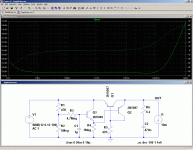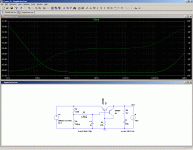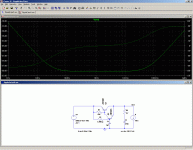Yeah, it is a ripple eater with a small appetite:E.D. is good for ads...
Not so good for circuits...
Contrary to what the article claims, the circuit doesn't even arrive at the modest 40dB rejection.
By removing one of the transistors, things begin to improve: it is now ~50dB.
But the real breakthrough is achieved with a more conventional CFP: we are now better than 60dB, with the added bonus of a smaller quiescent current (and simpler circuit).
The output impedance may not be as low, but this could also be fixed without great difficulty.
Attachments
Getting more than ~50dB, particularly at high frequencies, is made difficult by Early effect and capacitor ESR. I know a guy who works in quirky electronics, high sensitivity, wide band, low noise sorts of stuff, who once used a double or triple stage capacitance multiplier to achieve nanovolt noise levels from particularly dirty SMPS rails. This can be done with low dropout by chaining the stages from the same RC filter; after the first ~0.7V from the first emitter follower, you only need ~0.2V or so (Vce(sat) min) for each subsequent stage, which can be generated with a small leakage current down the divider (equivalent to R2 in your first schematic).
Tim
Tim
- Status
- This old topic is closed. If you want to reopen this topic, contact a moderator using the "Report Post" button.


